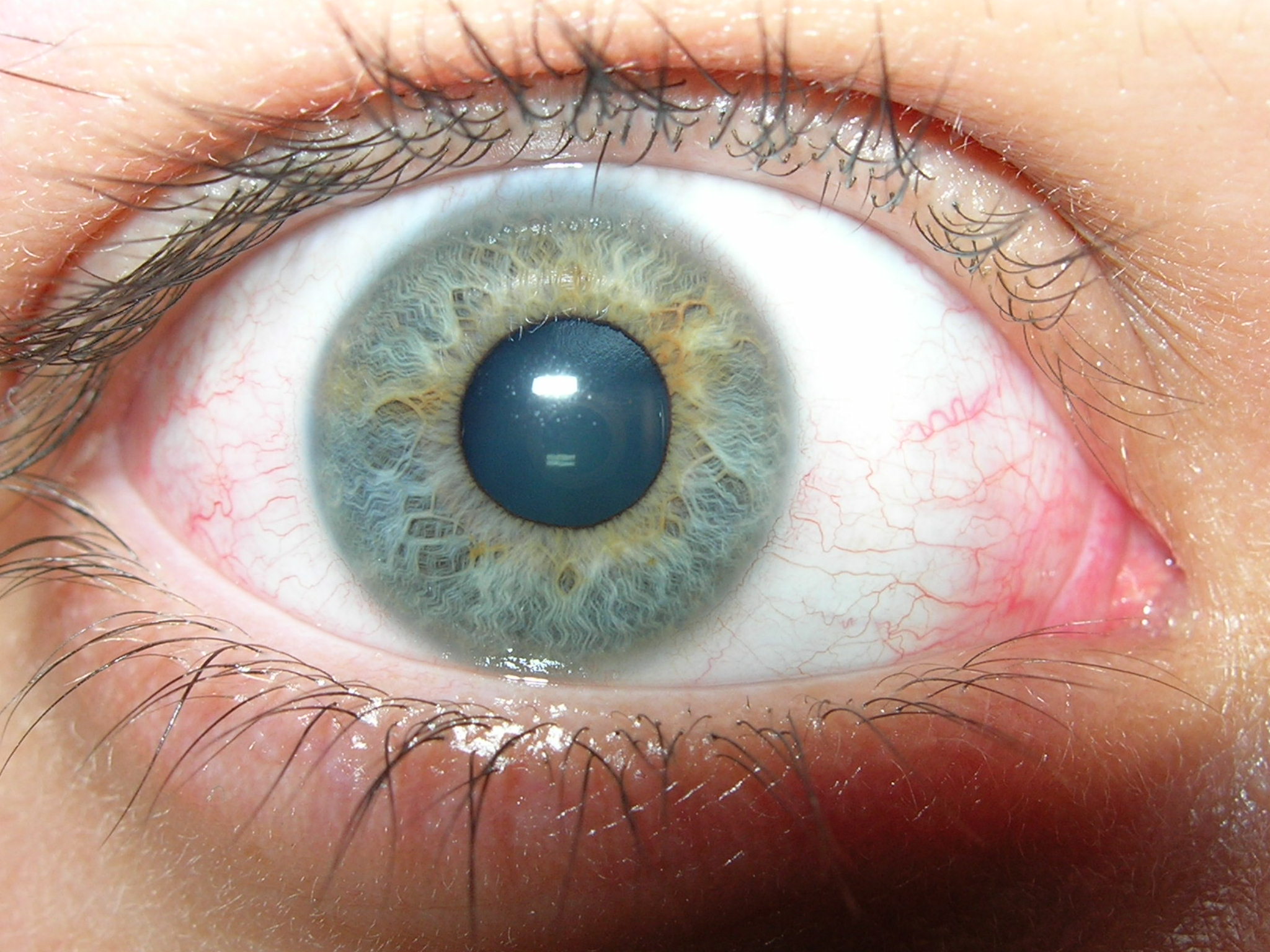Do you have tired eyes, headaches, dry eyes, and itchy eyes? Don’t panic, you are probably suffering from what doctors call “Dry Eye Syndrome”. You spend too much time in front of the screen and it tires your eyes. After several hours, you may feel tired, your eyes itchy, and your vision blurry. In this article, we’ll explain why spending too much screen time is bad for your eyes. And we will introduce you to different tips and natural treatments to relieve your dry eyes.
What causes dry eyes
Dry eyes are, as the name suggests, a dry eye that can affect all age groups. Dry eyes are characterized by a deficit in tear production, usually by the tear glands, which causes dry eyes. Dry eyes are caused by poor quality or decreased tear production.
The symptoms are multiple: tingling, feeling of sand in the eyes, glued eyelids… Most often, this phenomenon of dry eyes is linked to aging. Having dry eyes causes visual discomfort and can, in some cases, lead to corneal irritations as well as eye infections.
Eye fatigue from screen time
Dry and tired eyes appear in many circumstances. The most common being prolonged exposure to a computer screen, which is increasingly essential in our modern society, both in the world of work and in leisure.
In addition to screen workers or those who spend their free time there, eye fatigue can occur as a result of:
- reading poorly printed documents
- a long period of driving a vehicle
- excessive or insufficient lighting
- special working conditions, such as fault detection on a production line, observation under a microscope, etc.
When the eyes are tired, they tend to turn red and too dry. Focusing becomes difficult and vision may become blurry or double.
Eye fatigue can have a direct influence on the quality of the work to be done: reading slower, information less understood and integrated, reduced concentration, etc.
Differences between eye strain, eye strain, and dry eye
Eye fatigue is a temporary deterioration in the functioning of the eye following excessive use. It should be understood that eye strain includes both eye strain and eye strain.
Visual fatigue is recognizable by the occurrence of various symptoms that may be associated with it:
- reduced visual acuity
- decreased sensitivity to contrasts
- a feeling of dazzling
- visual field impairment
- diplopia, or the feeling of seeing double
Eye fatigue manifests itself by :
- the eye that stings, becomes irritated, becomes dry, consequences of insufficient tear secretion
- the red eye
- infrequent blinking. Note that the blink rate is generally in the range of 12 to 20 blinks per minute, which is necessary for a new tear film to form before the previous one breaks.
Eye fatigue can also be associated with headaches.
- Dry eyes: itchy eyes and irritation are symptoms caused by insufficient tear secretion and which can be likened to visual fatigue. Indeed, since we are very connected, we use our near vision a lot and this, in the long term. to stay very focused over the long term. However, this over-straining of our concentration to look closely tends to instinctively slow down the frequency of blinking, which ends up drying them out.
- A life in near vision: Our eye is physiologically designed to see naturally from a distance. However, today, it is clear that we are very connected. We tend to over-strain our near vision, by working the muscles around the eyes, which serve to converge, but which are not predisposed to such overdrive. Too much stress thus leads to the appearance of symptoms of visual fatigue.
Manage your screen time for healthy eyes
What screen time limit?
There is no clear answer to this question. Dry eyes, headaches, or blurred vision are all signs it’s time to take a break. To rest your eyes, it is advisable to follow the 20/20/20 rule. After 20 minutes, take a 20 second break looking at about 20 feet away.
Can symptoms become permanent?
It cannot be said with certainty that screen time permanently damages eye health. That said, there is an increase in myopia around the world. This could be because children spend less time outdoors, and they are less exposed to natural light. Hence their recommendation not to exceed two hours of screen time per day for children aged 5 to 18.
Can we reduce visual fatigue and relieve its symptoms?
- Indeed, there are easy steps you can take to better manage your screen time:
- Take several breaks and remember to blink more often.
- Position the monitor an arm’s length away, and use shielding to block blue light.
- On your phone, you can also activate the Night Vision function (Night Shift – iPhone) or the Blue Light Filter (Android).
- If you wear glasses, you can request lenses with a filter to block blue light. If you think you need glasses, learn to recognize the signs of a vision problem and talk to your optician.
- Blue light can also disrupt sleep cycles. Therefore, it is advisable to turn off screens at least an hour before going to bed.
Natural solutions to relieve eye fatigue
Naturopathic tips to relieve eye strain at work
For workers who use a computer screen, there are ways to prevent eye strain from occurring, including:
- If you work on a computer, take breaks every 20 minutes while looking out the window into the distance.
- Avoid glare on the computer screen: use anti-glare filters, blinds or curtains so that light does not reach the screen directly, place the screen perpendicular to the light source.
- You can use artificial tears to rehydrate the eyes.
- Remember to drink enough so as not to make the dry eyes worse.
- If you have a refrigerator at work, put a relaxing mask or cold tea bags in it and place them over your eyes for a few minutes during breaks. This helps restart the microcirculation.
- If you suffer from chronic fatigue, find in this article our naturopathic advice on chronic fatigue syndrome.
Naturopathic tips for treating dry eyes
- Blink regularly and excessively to increase the quantity and quality of tears and thus prevent dry eyes. Moisturize your eyes by blinking excessively for 30 seconds. The frequency of this movement, essential for the good health of your eyes, is greatly reduced when you stare at a screen.
- Keep an airy and bright environment. Oxygenate yourself by practicing physical activity during the day: you will sleep better at night and your eyes will be perfectly rested.
- Take regular visual breaks. Look in the distance, every 20 minutes, for at least 20 seconds. Indeed, by looking into the distance, you force your eyes to come out of their “near vision” position and release accommodation.
- Adopt a good working posture. The eyes tire more in near vision than in far vision. Organize your workstation by properly adjusting your computer screen – with the top of the screen at eye level and placed with an outstretched arm away. So keep a sufficient distance between your eyes and your screen (about the length of your arm). Place your computer screen at a slight angle and position it 70-80 cms from your eyes so that you can read it comfortably and comfortably. Take breaks or alternate tasks. Give yourself five minutes of rest every hour or fifteen minutes every two hours.
- Have a healthy lifestyle. No more sleepless nights, excess cigarettes and alcohol. To maintain good eyesight, it is best to focus on 8-9 hour nights, a healthy environment, and balanced eating habits. Remember to preserve your eyes in the evening
- Massage the area around your eyes. Close your eyes and, gently, with your index fingers, make small rotating movements starting from the inner corner of the eye and following the brow bone to the outer corner. These small pressures will reactivate the circulation. Do this three times in a row every day.
- Exercise in the gym or eye yoga to rest your eyes and at the same time relax you. Rub your hands together for a few seconds, then place them in a cup shape over your closed eyes without touching them.
Natural treatments for fatigue and itchy eyes
Polyunsaturated fatty acids must be provided in sufficient quantity in the daily diet. They play crucial roles in the composition of cell membranes as well as in many biochemical processes. Omega-3s contribute in particular to the well-being of the arteries and the heart, to the proper functioning of the brain and the retina.
Omega-3s could prevent dry eye syndrome thanks in particular to their anti-inflammatory action, according to a study6 published in the American Journal of Clinical Nutrition. Taking omega-3s increases oil production in tears. Several studies have shown an improvement in the quality of tears with the intake of these fatty acids. Omega-3s (DHA and EPA) seem to help decrease the evaporation of tears.
- Sea buckthorn oil to treat eye fatigue
Sea buckthorn is a well-known medicinal plant. Yellow to bright orange-red, its berries have been used for over a millennium against many disorders such as dry eyes and weakened immune systems.
Oral sea buckthorn oil 8 soothes irritation and redness of the eyes in people with eye pain. For three months, study participants took two sea buckthorn oil capsules (equivalent to two grams) each day.
After a dry eye treatment with sea buckthorn oil, the tear fluid becomes less salty and therefore more humid. The symptoms of dry eye decrease and you wear your lenses better.
- Chamomile tea to treat dry eye
Chamomile is a plant known for its many properties. Used as a food supplement, it is known to be a formidable anti-inflammatory. The flavonoids it contains help improve the condition of the eyes in case of irritation and dryness. To do this, simply concoct an infusion of chamomile and soak two cotton pads to rest on the eyes for 10 to 20 minutes. It’s up to you to choose when you want to do it.
Special precautions with natural dry eye treatments
- If you still feel discomfort, do not hesitate to go see your ophthalmologist who will accompany you for eye rehabilitation sessions. Remember to have your eyesight checked annually.
- A complication of dry eyes, especially with dry eyes over a long period of time, can lead to ceratitis, which is inflammation of the cornea.
- The risk of losing your sight due to dry eyes is very low or even nonexistent.
- If dry eyes do not improve with conventional treatments (eg artificial drops, etc.), please consult a doctor. Do not hesitate t o contact us on our secure form for advice adapted to your situation.
Sources
- https://www.doctissimo.fr/html/sante/mag_2004/sem01/mag0611/sa_7791_fatigue_visuelle.htm
- https://www.ameli.fr/assure/sante/themes/secheresse-oculaire/definition-symptomes-causes
- https://www.planetesante.ch/Magazine/Sante-au-quotidien/Secheresse-oculaire/Travail-sur-ecran-comment-faire-pour-ne-pas-avoir-les-yeux-secs
- https://www.laboratoires-thea.com/medias/brochure_syndrome_ecran_visualisation.pdf
- https://www.passeportsante.net/fr/Actualites/Nouvelles/Fiche.aspx?doc=2005111008
- Biljana Miljanovic et al. Relation between dietary n-3 and n-6 fatty acids and clinically diagnosed dry eye syndrome in women, American Journal of Clinical Nutrition, 2005 Oct;82(4):887-93
- https://docteurtamalou.fr/syndrome-yeux-secs-traiter/
- https://www.passeportsante.net/fr/Maux/Problemes/Fiche.aspx?doc=yeux-secs-syndrome-secheresse-oculaire-pm-prevention-du-syndrome-des-yeux-secs
- https://bubbly-contact.com/pages/guide-pratique/yeux-secs-remedes-naturels







